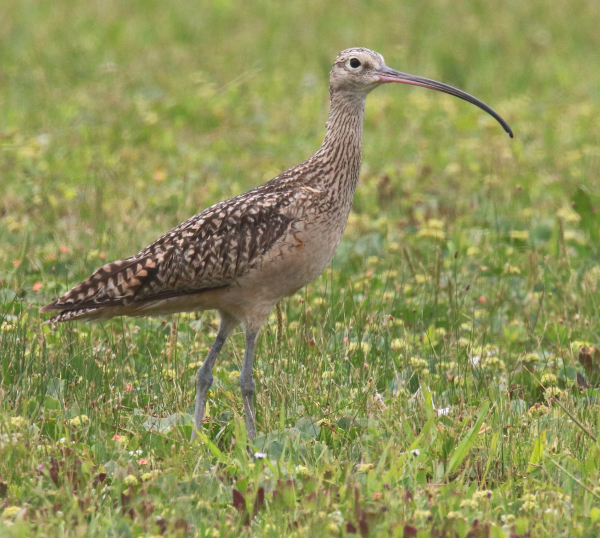 Long-billed Curlews are the focus species of a project being conducted in northwest South Dakota that will provide information to be used in other western states and provinces (photo by Paul Konrad).
|
A new project to enhance habitat for Long-billed Curlews and other iconic grassland birds in northwest South Dakota through 2024 is implementing rotational cattle grazing across 21,000 acres and returning 670 acres of annual cropland to perennial grass. Long-billed Curlews were selected as the project’s focal species because their habitat needs range from shorter grass for egg laying to longer grass to rear their young, and habitats used by curlews also encompasses the preferred habitats of many other grassland species that will also benefit from curlew conservation efforts.
In this 5-year project entitled “Cattle, Curlews, Conservation,” the American Bird Conservancy (ABC) is partnering with USDA-Natural Resources Conservation Service (NRCS), Pheasants Forever, and private land managers, funded by the South Dakota NRCS through their Conservation Implementation Strategy, a subset of the Environmental Quality Incentive Program (EQIP) with funds targeting such high-priority resource concerns as wildlife habitat for declining species.
The new project builds on prior ABC efforts including: A publication titled Land Manager’s Guide to Grassland Conservation and the Long-billed Curlew; a report entitled Conservation Strategies for the Long-billed Curlew; Focal Areas, Desired Habitat Conditions, and Best Management Practices; and a 3-year ABC-led roadside Long-billed Curlew survey conducted in southwest North Dakota. These and other private lands conservation efforts in the Great Plains have been produced to help ranchers strengthen their land management and operations so wildlife can thrive on healthy resilient working ranchlands.
Rotating cattle among pastures instead of keeping them in a single pasture can improve grass height and species diversity, boost plant health, and provide better forage for livestock by allowing plants to recover and grow between grazing periods.
Annual cropland is poor habitat for most wildlife. By returning less productive fields to perennial grasses, landowners and managers can provide hay or grazing space along with better bird habitat - especially when wildlife-friendly steps are taken, including harvesting hay after bird nesting.
Jessica Howell, ABC Northern Plains Conservation Specialist and leader of this project shared that “Many ranchers have fond memories of watching curlew pairs return year after year to their land, and this project embodies our shared desire to maintain these birds and lands for future generations.” said Jessica Howell.
To refer to the original American Bird Conservancy article, see https://abcbirds.org/article/cattle-curlews-and-conservation-new-south-dakota-project-benefits-great-plains-birds-and-working-lands/
